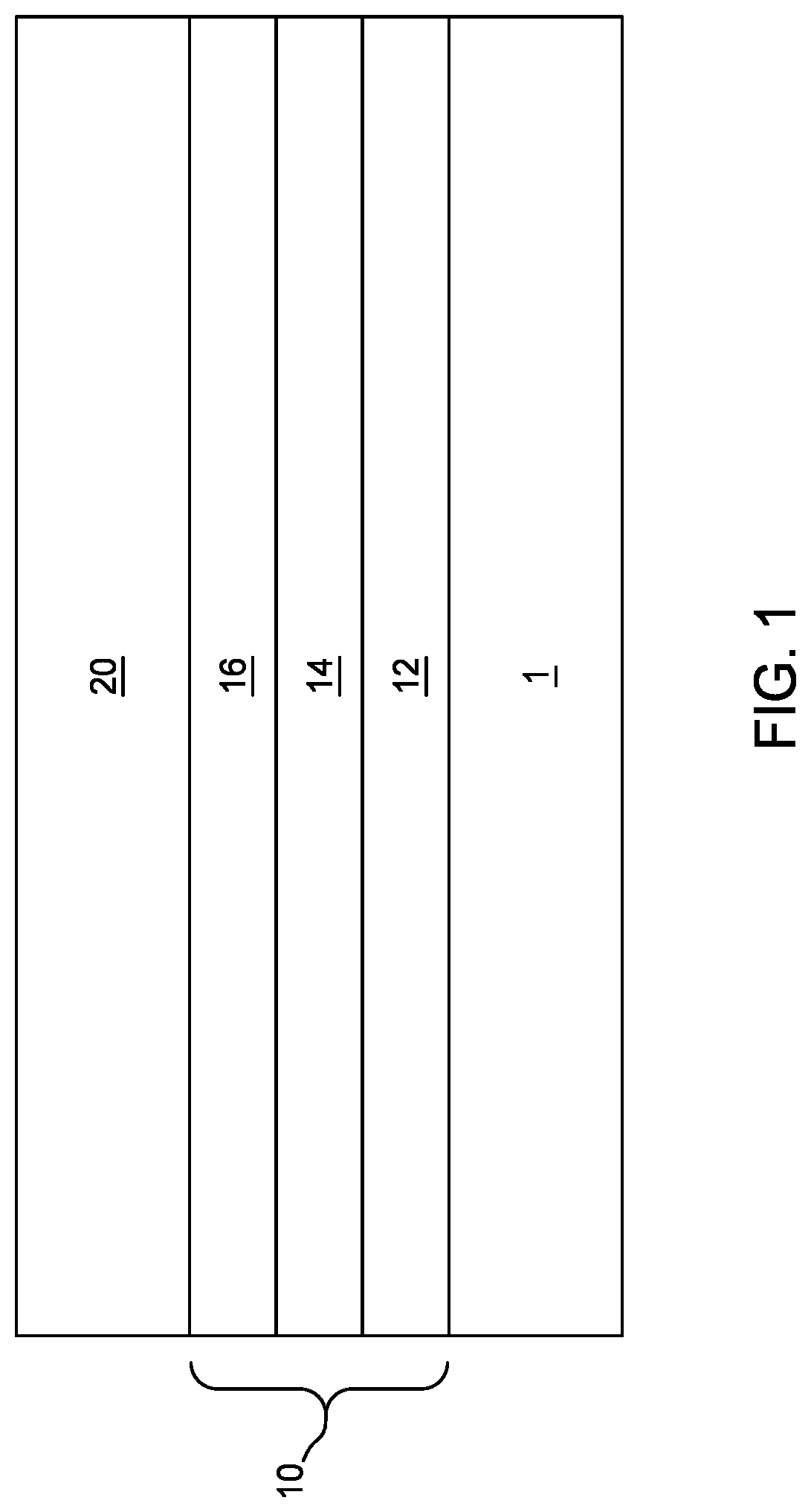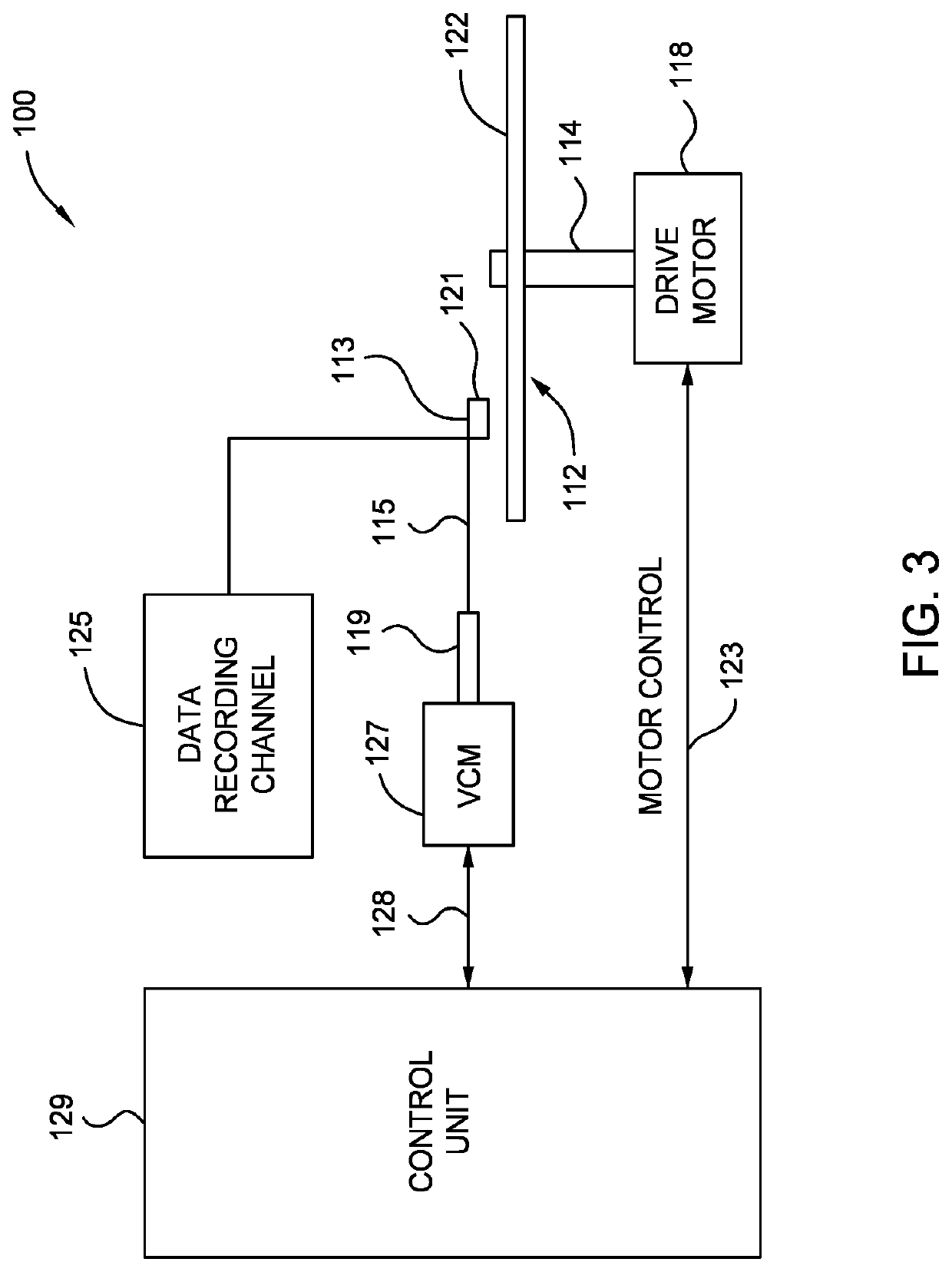BiSb Topological Insulator with Novel Buffer Layer that Promotes a BiSb (012) Orientation
a topological insulator and buffer layer technology, applied in the field of buffer layer, can solve the problem of poor adhesion of the bisb layer with a (012) orientation on si (111)
- Summary
- Abstract
- Description
- Claims
- Application Information
AI Technical Summary
Benefits of technology
Problems solved by technology
Method used
Image
Examples
examples
[0062]The following are examples to illustrate various embodiments of a BiSb layer, such as the BiSb layer 20 of FIGS. 1 and 2, the magnetic drive 100 of FIG. 3, the write head 210 of FIG. 4, the SOT devices 250 of FIGS. 5A-C and 6, other BiSb layers, other magnetic drives, other SOT devices, and variations thereof. These examples are not meant to limit the scope of the claims unless specifically recited in the claims.
example a
[0063]In Example A (FIG. 7), a BiSb layer 710 was deposited by PVD to a thickness of about 100 Å directly on a silicon (111) substrate. A BiSb layer 720 was deposited by PVD to a thickness of about 100 Å directly on a NiFe layer. The NiFe layer was deposited by PVD to a thickness of about 6 Å over a silicon (111) substrate. A BiSb layer 730 was deposited by PVD to a thickness of about 100 Å directly on a NiFe layer. The NiFe layer was deposited by PVD to a thickness of about 50 Å over a silicon (111) substrate.
[0064]FIG. 7 illustrates X-ray diffraction (XRD) 2Θ scans of the BiSb layers 710, 720, 730. The BiSb layer 710 directly formed on a thermal oxide coated silicon substrate showed a (001) orientation. The BiSb layers 720, 730 directly formed on NiFe layers over a thermal oxide coated silicon substrates showed a (012) orientation.
example b
[0065]In Example B (FIG. 8), a BiSb layer 1010 was deposited by PVD to a thickness of about 100 Å directly on a Cu layer. The Cu layer was deposited by PVD to a thickness of about 20 Å over a thermal oxide coated silicon substrate. A BiSb layer 1020 was deposited by PVD to a thickness of about 100 Å directly on a NiFe layer. The NiFe layer was deposited by PVD to a thickness of about 10 Å over a thermal oxide coated silicon substrate. A BiSb layer 1030 was deposited by PVD to a thickness of about 100 Å directly on a NiTa layer. The NiTa layer was deposited by PVD to a thickness of about 20 Å over a thermal oxide coated silicon substrate. A BiSb layer 1040 was deposited by PVD to a thickness of about 100 Å directly on a NiFe layer. The NiFe layer was deposited to a thickness of about 5 Å by PVD directly on a Cu layer. The Cu layer was deposited by PVD to a thickness of about 20 Å over a thermal oxide coated silicon substrate. A BiSb layer 1050 was deposited by PVD to a thickness of a...
PUM
 Login to View More
Login to View More Abstract
Description
Claims
Application Information
 Login to View More
Login to View More - R&D
- Intellectual Property
- Life Sciences
- Materials
- Tech Scout
- Unparalleled Data Quality
- Higher Quality Content
- 60% Fewer Hallucinations
Browse by: Latest US Patents, China's latest patents, Technical Efficacy Thesaurus, Application Domain, Technology Topic, Popular Technical Reports.
© 2025 PatSnap. All rights reserved.Legal|Privacy policy|Modern Slavery Act Transparency Statement|Sitemap|About US| Contact US: help@patsnap.com



